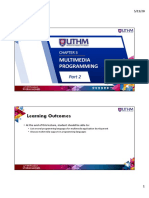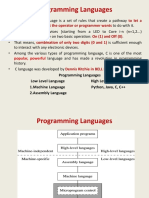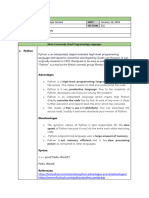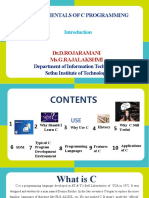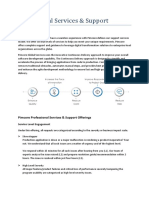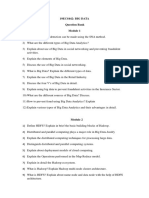0% found this document useful (0 votes)
24 views9 pagesPrograming Language's Tutorial's
The document provides an overview of four programming languages: C, C++, Python, and Java, detailing their history, features, applications, advantages, and disadvantages. C is known for its efficiency in system programming and embedded systems, while C++ adds object-oriented features and is widely used in game development. Python is praised for its simplicity and extensive libraries, making it popular in data science and web development, and Java is recognized for its platform independence and strong community support in enterprise applications.
Uploaded by
adarshbhargava930Copyright
© © All Rights Reserved
We take content rights seriously. If you suspect this is your content, claim it here.
Available Formats
Download as PDF, TXT or read online on Scribd
0% found this document useful (0 votes)
24 views9 pagesPrograming Language's Tutorial's
The document provides an overview of four programming languages: C, C++, Python, and Java, detailing their history, features, applications, advantages, and disadvantages. C is known for its efficiency in system programming and embedded systems, while C++ adds object-oriented features and is widely used in game development. Python is praised for its simplicity and extensive libraries, making it popular in data science and web development, and Java is recognized for its platform independence and strong community support in enterprise applications.
Uploaded by
adarshbhargava930Copyright
© © All Rights Reserved
We take content rights seriously. If you suspect this is your content, claim it here.
Available Formats
Download as PDF, TXT or read online on Scribd
/ 9





